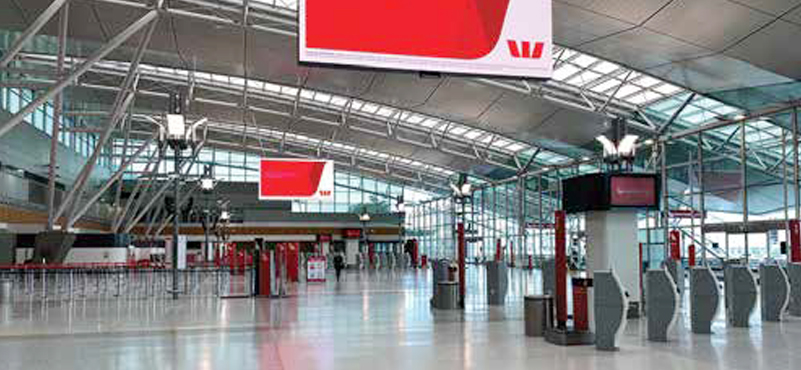Backing the government’s intent of examining the feasibility of privatizing Air India, with mounting debt on the national carrier, the recently released CAPA report calls for prudent action and right strategies to fend off debt and improve operations. Also, given the rise in air-traffic and expansion plans of airlines, the report calls for urgent revamp of infrastructure to meet imminent challenges facing the industry. Excerpts from the insightful report.

Consolidation is inevitable in the next 1-2 years due to likely financial challenges and competitive dynamics.
We may see a repeat of the conditions seen after the euphoric growth during 2004-2008. Excess capacity will make the weaker operators particularly vulnerable and consolidation is inevitable. Deferral and cancellation of aircraft orders is also likely.
Poaching of pilots is becoming a serious challenge, and the regulator is likely to increase the notice period for pilots to exit from six to 12 months. CAPA views this as a major barrier to growth
With its insatiable demand for crew to support its rapidly expanding fleet, and its strong financial reserves to be able to fund a hold pool of pilots, IndiGo is leading the way in poaching crew. The carrier could require 500-600 additional pilots in FY2018, creating a shortage across the industry.
Relying on expat commanders to address the shortage is fuelling a potential industrial relations’ challenge. The strategy of employing expat captains, on higher salaries than locals, is not only an expensive solution, it is also creating resentment amongst Indian pilots and could evolve into a more serious industrial relations issue. Agreeing to the Indian pilots’ demand for pay parity would further increase unit costs. However, there does not appear to be any near-term solution to addressing the supply side constraints.
CAPA reiterates that airport infrastructure challenges could constrain growth and lead to suboptimal operations and network economics
Parking bays and runway slots will become increasingly scarce over the next few years, especially at metro airports. Signs of congestion are already emerging at Mumbai, Chennai and Delhi and the situation will become more acute unless airports are able to construct 400 parking bays and enhance airside capacity within five years. Otherwise airlines will face challenges in implementing their base and network plans.
CAPA has long maintained that the projected industry growth rates will heighten safety risks due to the regulator being over-stretched. Institutional strengthening of the DGCA is a national interest issue. If unaddressed, another downgrade by the FAA cannot be ruled out.
India’s regulator, the DGCA will struggle to provide adequate regulatory oversight for the projected size of the market. It is already under-resourced and short of expertise to meet current requirements, let alone future growth. The increase in airprox incidents in the last 12 months is a concern. In addition, it will be stretched by the entry of new operators and first of type equipment as a result of the launch of the Regional Connectivity Scheme. If oversight capabilities are left unaddressed, another FAA downgrade to Category 2 is not out of the question.
Large aircraft orders are being driven by expectations of sale-and-leaseback profits, but may exceed the financing available
Indian airlines are planning to finance most of the aircraft orders through sale-and-leaseback transactions. By placing large orders, they are able to achieve a lower purchase price from the manufacturers and a higher profit on selling the aircraft to a lessor, generating valuable cash for working capital. They have seen how effective this strategy has been for IndiGo and intend to follow suit.
Whether there is sufficient lessor interest to finance all of these aircraft, including pre-delivery payments, and what impact the volumes will have on sale-and-leaseback margins, is yet to be seen. Airlines that are banking on profits on the sale of aircraft may find that they are unable to raise as much cash as projected.
However, the outlook for macro-economic conditions remains favourable
Despite the challenges described, there are some positive conditions as well. India’s economy looks well-positioned to continue to grow at 7-8% per annum over the next few years, which are also expected to be characterised political stability. And fuel prices are expected to remain in the range of USD55-60, with the exchange rate at around INR65-70.
In such a highly competitive and challenging environment, Air India cannot continue to be funded by taxpayers to fight private capital. CAPA congratulates the Indian government on being open to considering privatisation, which would be a far-reaching and highly positive reform
The national carrier has already absorbed USD3.75 billion of equity from the government with no end in sight to the need for subsidies. Subsidising Air India to the tune of hundreds of millions of dollars a year is neither sustainable nor is it desirable for a government which has so many other pressing economic and social priorities. Furthermore, the government’s role as a major operator in the aviation sector through its ownership of Air India and the Airports Authority of India will continue to negatively influence policy outcomes.
Air India’s small operating profit in FY16 was viewed in some quarters as a sign that the national carrier has turned around. Whilst there have been some improvements in its operating and commercial performance, the company does not yet have a viable business model or a clear long-term direction. And it remains hamstrung by massive debts. Air India’s plans to pursue aggressive expansion, taking delivery of 70-80 narrow bodies, wide bodies and regional aircraft over the next few years, without addressing the underlying organisational and balance sheet weakness, will lead the carrier into a structural mess.
Air India’s new strategy should be to significantly deleverage its balance sheet before a business case for privatisation is considered. Measures that could be taken to support an effective restructuring of the airlines include hiving-off Air India Express and pursuing a partial sale of its LCC subsidiary; selling its 50% stake in AISATS; divesting its ground handling subsidiary Air India Air Transport Services Limited; and inducting an investor in Air India Engineering. The proceeds from these divestments, combined with the sale of real estate holdings, would help in significantly reducing non-aircraft related debts.




































